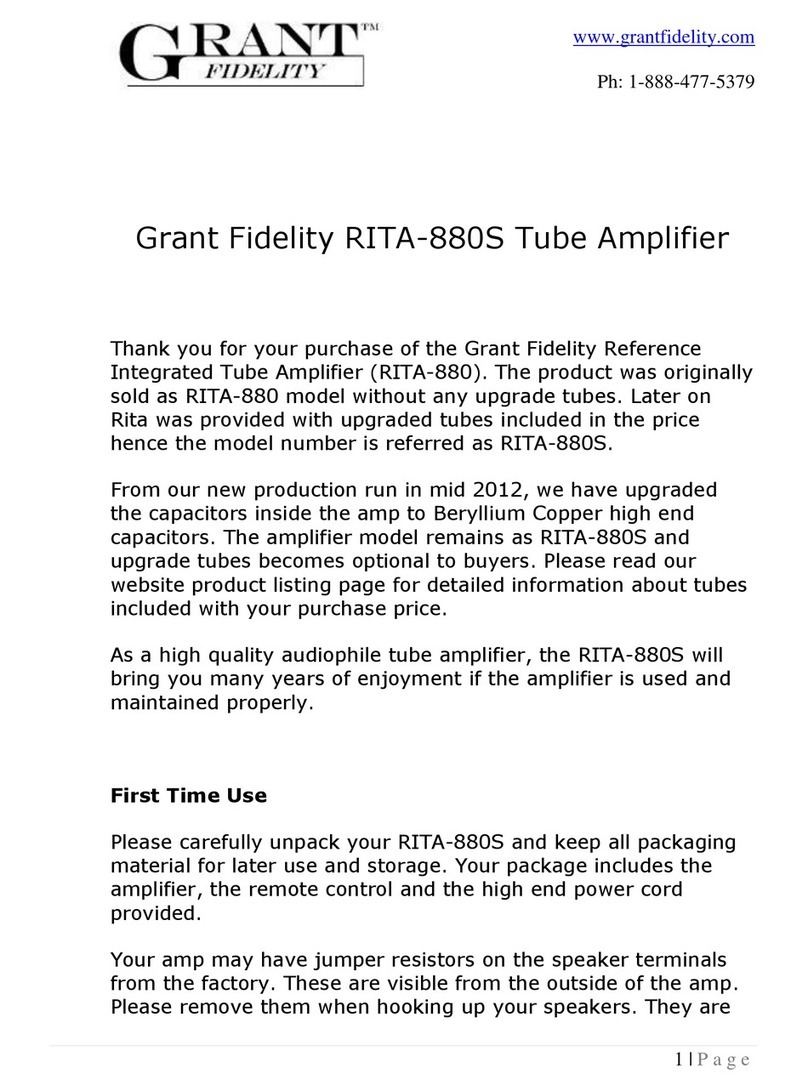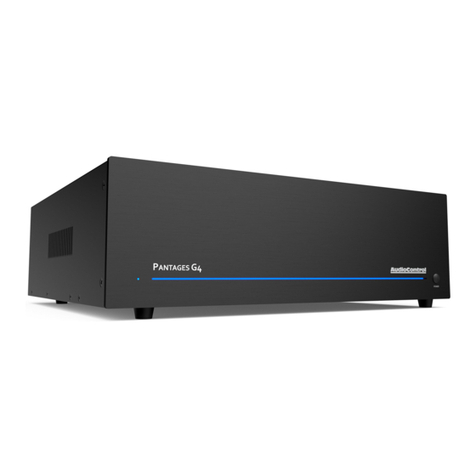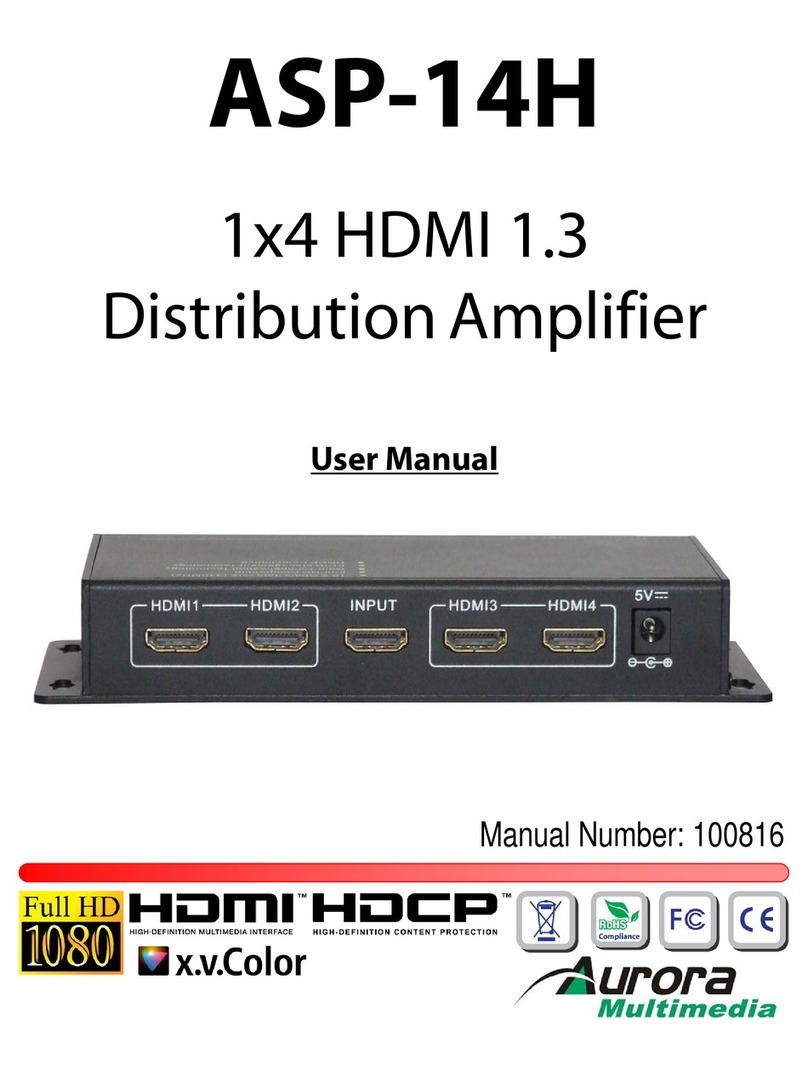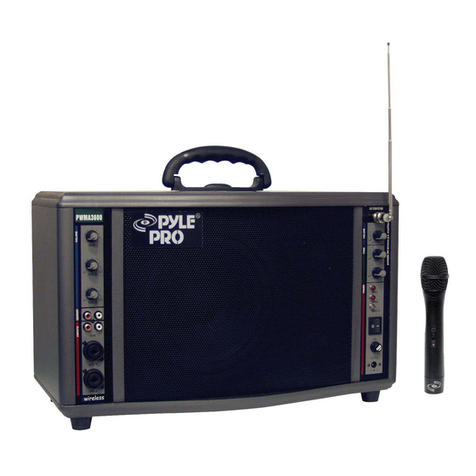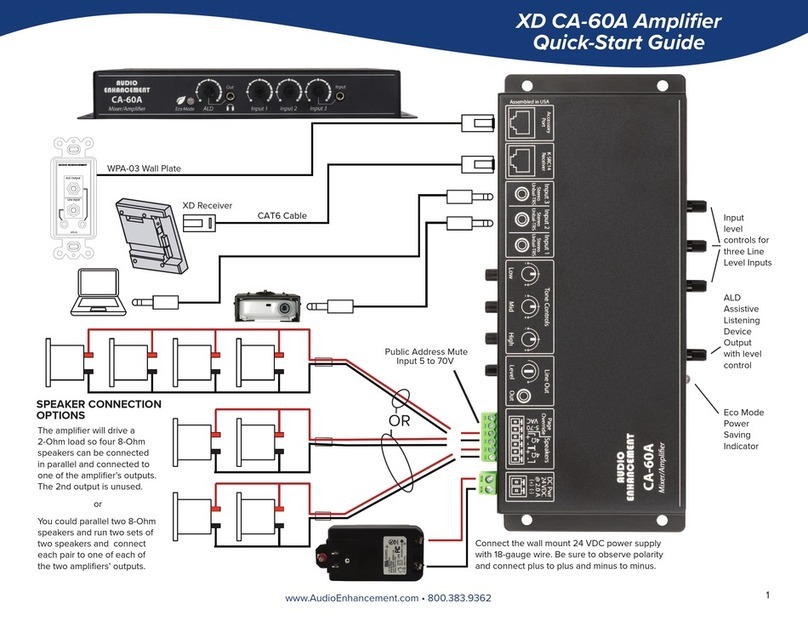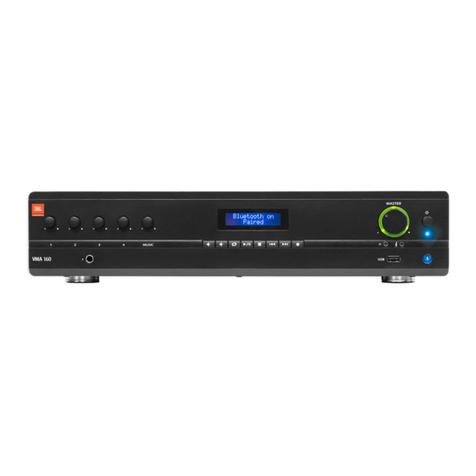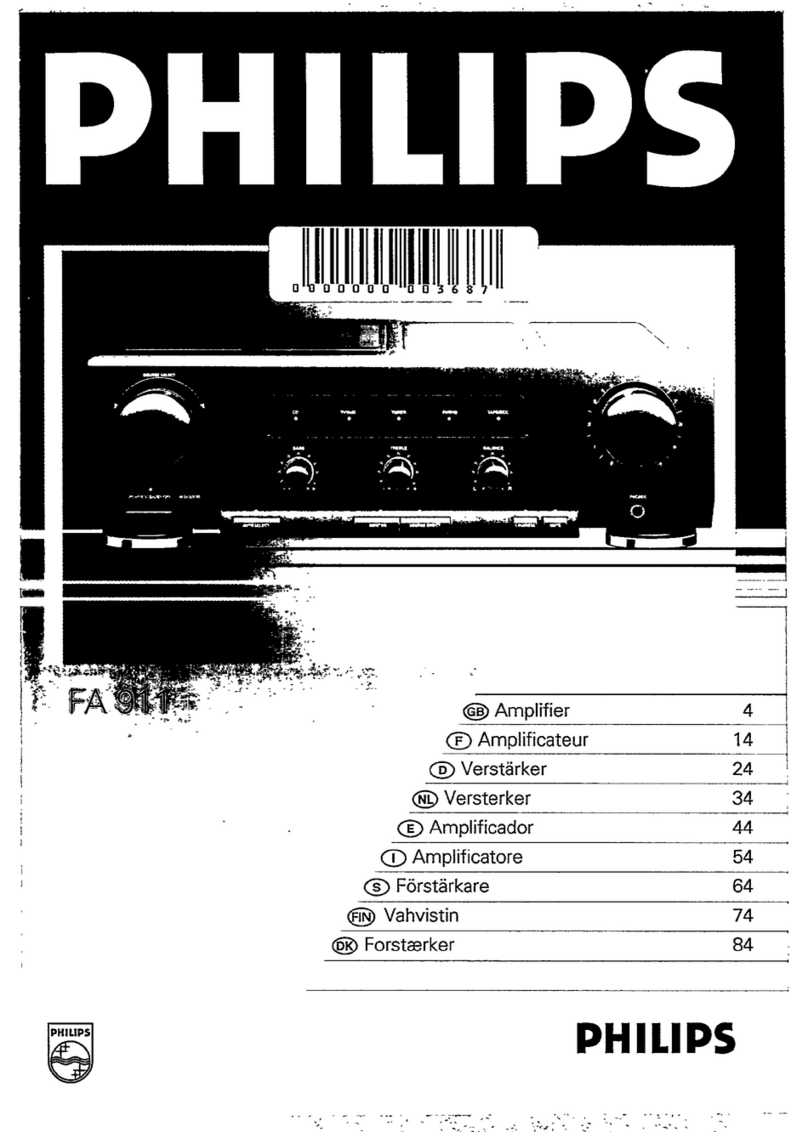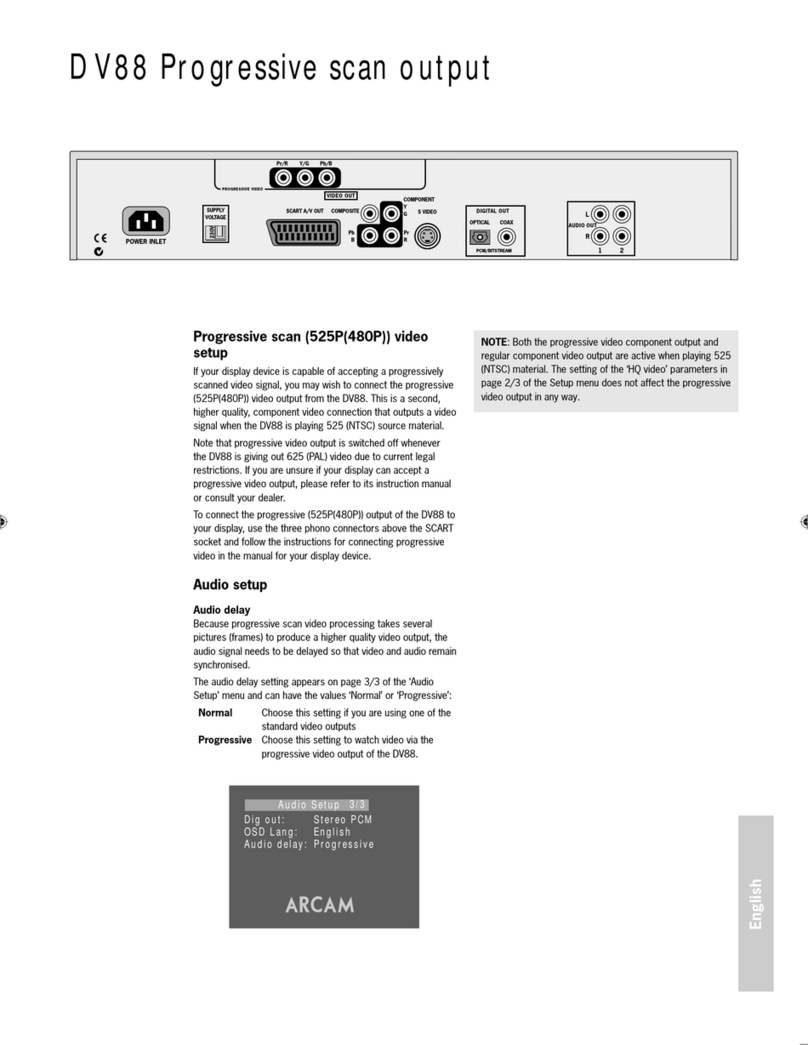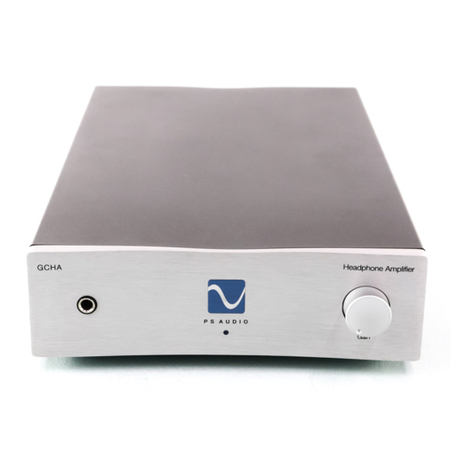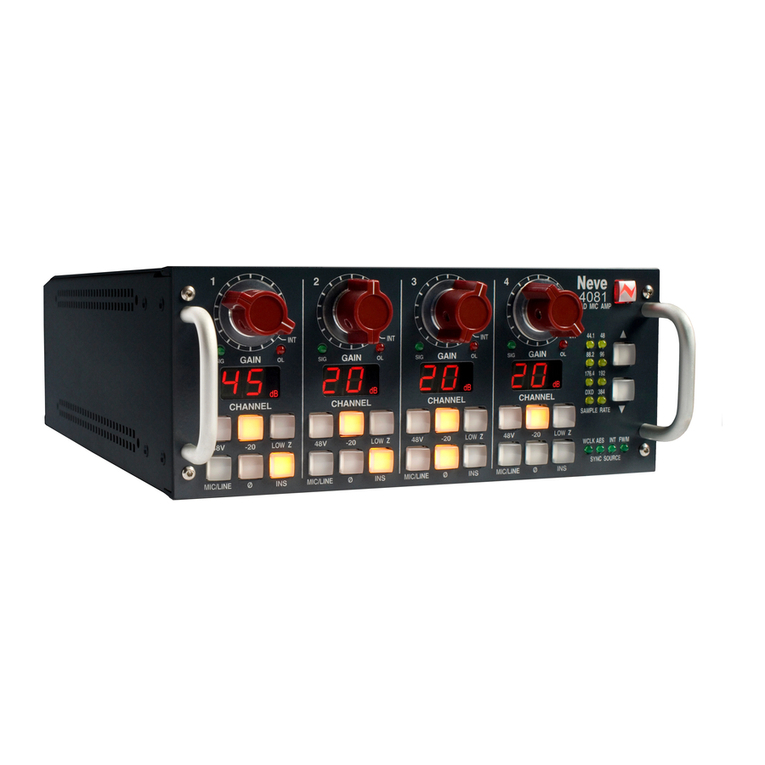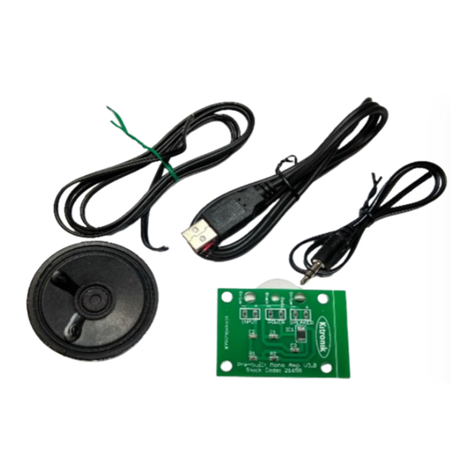Grant Fidelity RITA-880 User manual

1 | P a g e
RITA-880 Tube Amp Instructions
Caution:
Working with a live electronic circuit involves lethal voltage. We strongly recommend users to consult professional technician for tube
amp services. We are not liable for any body or property damages that may be caused by unauthorized or untrained personnel’s own
action. Please proceed at your own risk.
A.Change front meter:
1. Take off the top cover and bottom cover by removing all screws. Make sure not to drop any screws inside the amp. If it happened, put the
amp on its side to take the screws out.
2. Put the amplifier upside down with bottom facing up (as shown in picture), make sure tubes are installed securely in their sockets before
you turn over the amp. Click off the twist-tie at B1 with a pair of small scissors or wire cutters. Make sure not to cut any wires.
3. Unplug all (5) connections as pointed as B2 in the picture. Do not pull the wires –you should only remove the connectors with hand at the
base with gentle force, otherwise the wires could be permanently damaged.
4. Put the amp with top facing up. Remove the (2) screws at both ends of the front meter, then you can lift it out from the top of the amp.
5. To install new meter, reverse all the above steps.
B.Bias the amplifier:
After you receive delivery of your new tubes, there could always be a chance that tubes were damaged in shipping and handling but such
damages are not visible by naked eyes. Ideally you should have a tube tester to tell you if a tube is shorted or not. If you don’t have a tube tester,
follow the instruction below carefully and shut down the amp immediately at sign of problems to avoid damages to the amp. Install a bad tube to a
perfectly fine amp could result in damages to the amp.

2 | P a g e
1. Remove the amp top cover, remove all old tubes then iinstall all new tubes to the right sockets –make sure no tubes were installed in the
wrong socket. This amp has all 8 sockets of same size so do not install wrong type of tubes to any socket! Leave the amp top cover off.
2. Put the amp on its side with a soft cloth under it to avoid scratching the finish. Take off the bottom cover by removing all screws.
3. Turn the amp while it’s on its side to have the bottom of the amp facing you, the front meter on your right hand side. Check again that all
tubes are installed securely at this time.
4. Connect the amp to source signal and speakers, check all connections to make sure they are correct then turn on the amp while it is on its
side, bottom facing you, front meter on your right hand side.
(Caution!!!!! The amp is now live with power, do NOT touch anything inside the amp with bare hands or any object –there is lethal
voltage inside the amp.)
5. Use a multi-meter with settings set to DC 20V, connect the black (negative) probe to the negative speaker post (black). Do not connect to
the red speaker post!!! Leave the speakers connected to the amp at the same time –do not leave the amp on without speaker load at any
time.
6. Use the multi-meter’s red (positive) probe to test the voltage at P1, P2, P3 and P4. (When you finish the bias process, all 4 spots should
have voltage reading of 0.4V. Keep each reading as close as possible to each other for best results.)
With the red probe at test point P1, use a small screw driver to adjust R1 slowly while reading the voltage meter to 0.4V.
With the red probe at test point P2, use a small screw driver to adjust R1 slowly while reading the voltage meter to 0.4V.
With the red probe at test point P3, use a small screw driver to adjust R2 slowly while reading the voltage meter to 0.4V.
With the red probe at test point P4, use a small screw driver to adjust R2 slowly while reading the voltage meter to 0.4V.
With the red probe at test point P1 again, use a small screw driver to adjust R3 slowly while reading the voltage meter to 0.4V.
With the red probe at test point P2 again, use a small screw driver to adjust R3 slowly while reading the voltage meter to 0.4V.
With the red probe at test point P3 again, use a small screw driver to adjust R4 slowly while reading the voltage meter to 0.4V.
With the red probe at test point P4 again, use a small screw driver to adjust R4 slowly while reading the voltage meter to 0.4V.

3 | P a g e
Please note that the entire bias circuit for all 4 KT88 tubes is connected so adjusting any of the above will cause other test point value
changes slightly. R1 and R2 are for voltage adjustments for all 4 KT88 tubes, R3 and R4 are for balancing between two KT88 tubes on one
channel a time. You will need to repeat the above process for several rounds until you have all 4 spots at P1, P2, P3 and P4 to read the
same (or nearly the same) voltage at 0.4V.
If you have a EL34 version amp (RITA-340), the bias voltage should be set at 0.35V.
7. Leave the amp running as how it is (top and bottom covers off, on its side) for about 20 minutes. Check the voltage at P1 to P4 again and
make necessary adjustments. Repeat the process for 3 times in the period of about 1 hour. Do not leave the amp unattended during this
time. If there is obvious noise from speakers, overheating of resistors causing burnt smell from inside the amp –turn the amp off
immediately and test the tubes on a quality tube tester. If you don’t have one, you should not use these tubes in the amp again until you can
be sure the tubes are of no problem then attempt to bias the amp again.
8. Now your amp is biased successfully with the tubes and ready to sing.
9. Put on the amp’s bottom cover with screws.
10.Put the amp on its bottom –install the top covers with screws.
11.Put the amp in its normal position with good ventilation all around. Do not stuff the amp in a tight closed cabinet –you will kill your tube amp
faster than you know!
12.Bias completed and now you can return to enjoy your tunes.
Screws to
remove meter

4 | P a g e
图2
Table of contents
Other Grant Fidelity Amplifier manuals
